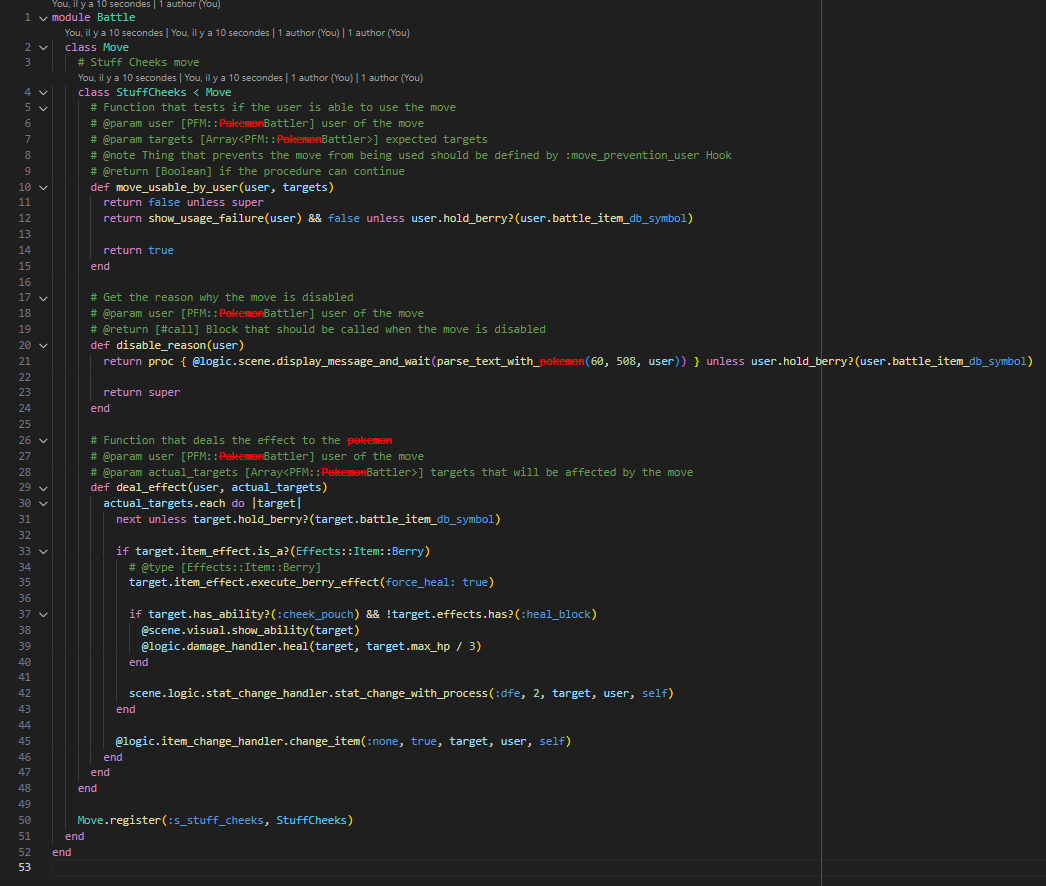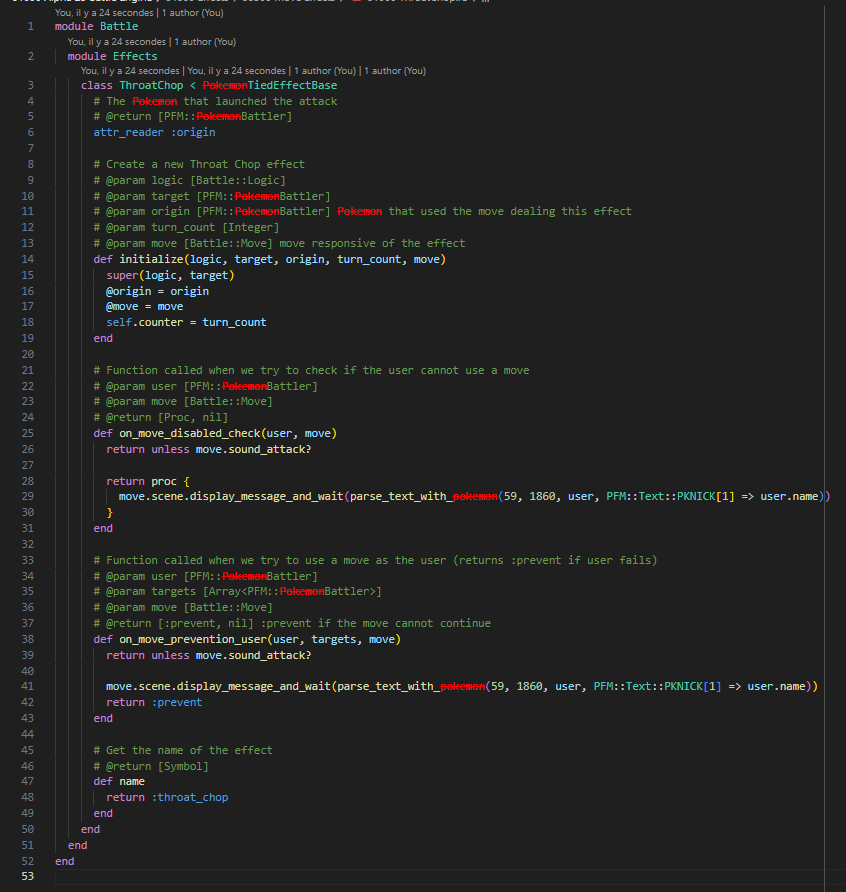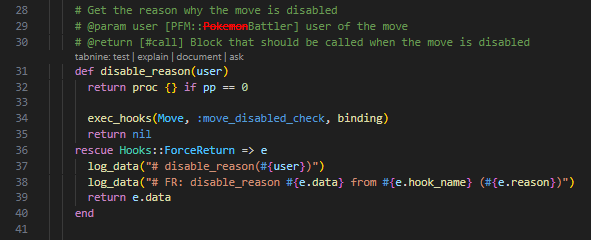How to prevent selecting a move?
What are the ways to prevent the selection of a move?
Selecting a move is a process stemming from your choice of action at the beginning of the turn. If there is a reason why the move cannot be selected, then the functions related to blocking must return a proc instead of nil, and within this proc, indicate the reason for the blockage with a message.
From the code of the move itself
Some moves cannot be selected because of how they work. For example, it is not possible to select Stuff Cheeks if the user does not have a berry. To do this, there is a method in the move: disable_reason which must return a proc if the user is not holding a berry.
Example with "Stuff Cheeks"

Note: If you wish to learn more about disable_reason, please go to the section Understanding the disable_reason function at the end of the article.
From the code of an effect
Effects expose a function that allows returning a proc when disable_reason is invoked. This method is called on_move_disabled_check. The operation is similar to disable_reason, if you return a proc, then the move cannot be selected. This is useful for creating effects (ability, item, effects of move etc.) that prevent a Pokemon from being able to select a move.
Example with the effect of the move "Throat Chop"

Understanding the disable_reason function

What particularly interests us in this function:
exec_hooks(Move, :move_disabled_check, binding)
exec_hooks: This is a method that is called to execute a series of Hooks. Hooks are functions or procedures that are triggered in response to certain events or conditions in the program. They allow modifying the standard behavior of a function or adding additional functionalities without changing the original code of the function.
Move: This first argument specifies the context or scope of application of the Hooks to be executed. Here, Move indicates that the Hooks pertain to Pokémon abilities. Move represents the class that groups together the Hooks related to abilities.
:move_disabled_check: The second argument is a symbol that specifically identifies the Hooks to be executed. In this case, :move_disabled_check refers to a set of Hooks designed to check if the Pokémon user can select a certain move. These Hooks can include checks for conditions such as field effects, abilities, items, etc., that might prevent the move selection. (examples: the effect of Gravity, Gorilla Tactics, Choice Scarf)
binding: The third argument, binding, is a bit more complex. In Ruby, a binding is an object that encapsulates the execution context of a piece of code, including local variables, available methods, the value of self, etc. Passing binding to exec_hooks thus allows the Hooks to access the context in which exec_hooks was called. This means they can read and modify local variables, call methods, and so on, as if they were part of the original code of the method move_disabled_check.
Understanding the procedure of the function disable_reason
Hook Call
When exec_hooks(Move, :move_disabled_check, binding) is executed, it searches for and executes all the Hooks associated with the event or condition :move_disabled_check in the context of abilities (Move).
Management of the value returned by the Hook
If none of the executed Hooks raises a Hooks::ForceReturn exception, the function move_disabled_check continues its execution normally and reaches the return nil at the end, indicating that the move is selected.
However, if a Hook decides that the move should not be used and returns a proc (either directly or via an exception such as Hooks::ForceReturn with e.data containing the proc), the execution flow of move_disabled_check is interrupted, and it returns the proc to its caller.
Consequences of returning the proc
The return of the proc means that something has prevented the selection of the move. This could be due to various game-specific reasons, such as field effects, abilities, items, etc...
The calling function or method that invoked move_disabled_check must then handle this proc to decide on the subsequent actions. For example, this may result in displaying a message to the user indicating that the move cannot be selected.
Necessity of another function
This function and its associated Hook are used to prevent the execution of an move. However, it is possible that some effects, such as Metronome, bypass this function. Therefore, it is essential to manage this situation in a move_usable_by_user or its associated Hook, especially when intervening in an effect, as illustrated in the previous examples.